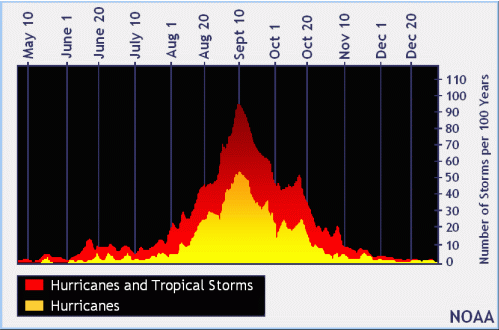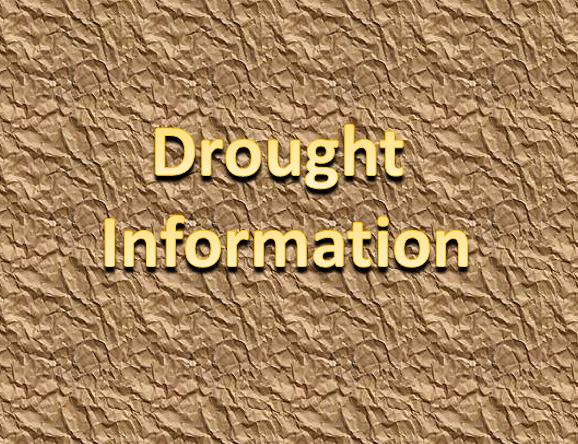May 2019 Climate Summaries
Mobile Alabama and Pensacola Florida Area
National Weather Service Mobile Alabama
June 3, 2019
May 2019 in Review - Summer started early during the month of May with temperatures lifting to well above seasonal normal. The warm spell was notable as May 2019 broke into the top ten warmest for the period of record at both Mobile and Pensacola. Even so, only one record high was recorded late in the month for both the Mobile and Pensacola areas. For rainfall, another dry month at both Mobile and Pensacola with both sites coming in well below normal. Considering that the annual trace for rainfall continues to lag well off seasonal normals, dryness over the southern half of the coastal plain has worsened; abnormally dry conditions early in the month of May increased to moderate drought by the end of the month.
Mobile Alabama Area - The average monthly high of 87.8° was 3.3° above normal. When considering the average high, this makes May 2019 the 5th warmest on record dating back to 1872. The average monthly low of 66.8° was 3.1° above normal. The average monthly temperature of 77.3° was 3.2° above normal. The average monthly temperature now stands as 4th all time warmest. Mobile saw 1 record temperature. A record high of 96° on the 26th tied the previous record for this date set in 1962.
(Fig. A) shows how the Mobile area temperatures compared to the seasonal normal monthly highs and lows, which are shown by the colored dashed lines. May rainfall (Fig. B) measured 3.86" or 1.28" below normal. 2019's accumulated rainfall ending May 31st continues well below seasonal normal by several inches.
Click on the Mobile Alabama area climate graphics below to expand:

|

|

Against Climatology |
Pensacola Florida Area - The average monthly high of 86.3° was 3.1° above normal. When considering the average high for Pensacola, this makes May 2019 the 6th warmest on record dating back to 1879. The average monthly low of 69.3° was 3.3° above normal. The average monthly temperature of 77.8° was 3.2° above normal. The average monthly temperature also stands as 6th all time warmest. Pensacola saw 1 record temperature. A record high of 95° on the 25th broke the previous record of 94° occurring on this date in 2012.
(Fig. C) shows how the Pensacola area temperatures compared to the seasonal normal monthly highs and lows, which are shown by the colored dashed lines. Pensacola area rainfall (Fig. D) measured 2.81" or 1.37" below normal. 2019's accumulated rainfall ending May 31st indicates a substantial deficit by a little over 9 inches below the seasonal normal.
Click on the Pensacola Florida area climate graphics below to expand:

|

|

Against Climatology |
June Climatology and Outlooks:
It's the beginning of the Atlantic Basin hurricane season and NOAA predicts a near normal season. This outlook reflects competing climate factors. The ongoing El Niño is expected to persist and suppress the intensity of the hurricane season. Countering El Niño is the expected combination of warmer-than-average sea-surface temperatures in both the tropical Atlantic Ocean and Caribbean Sea along with an enhanced west African monsoon, both of which favor increased hurricane activity. Links to the outlook and tropical climatology are added below.
Click on the snap shots below to expand:

|

Outlook |

Outlook |

Climatology |

Hurricane Outlook |

|
Climate Prediction Center's Interactive Long Range Outlooks
Additional Climate Links:
The links below are intended to provide additional climate information, education and outlooks. The National Weather Service Mobile Alabama's Climate and Past Weatherpage provides climate data at your fingertips for many observation points in the local forecast area by accessing the NOWData tab as well as many other climate resources. The Climate Prediction Center Link provides short and longer range climatic outlooks and education about the larger scale global circulations that impact temperatures and weather. With the large agriculture and farming presence along the central Gulf coast, the Drought Monitor link provides updates on drought trends and impacts. Another very helpful resource is the Community Collaborative Rain Hail and Snow (CoCoRaHS) network, which is a large group of volunteers working together to measure and map precipitation (rain, hail and snow). The aim of CoCoRaHS is to provide the highest quality data for natural resource, education and research applications. You can be a part of the CoCoRaHS team by becoming a volunteer rainfall observer. To learn more click on the CoCoRaHS link below.
National Weather Service Mobile AL Climate and Past Weather
Climate Prediction Center (CPC)
CoCoRaHS Network Water Year Summaries
